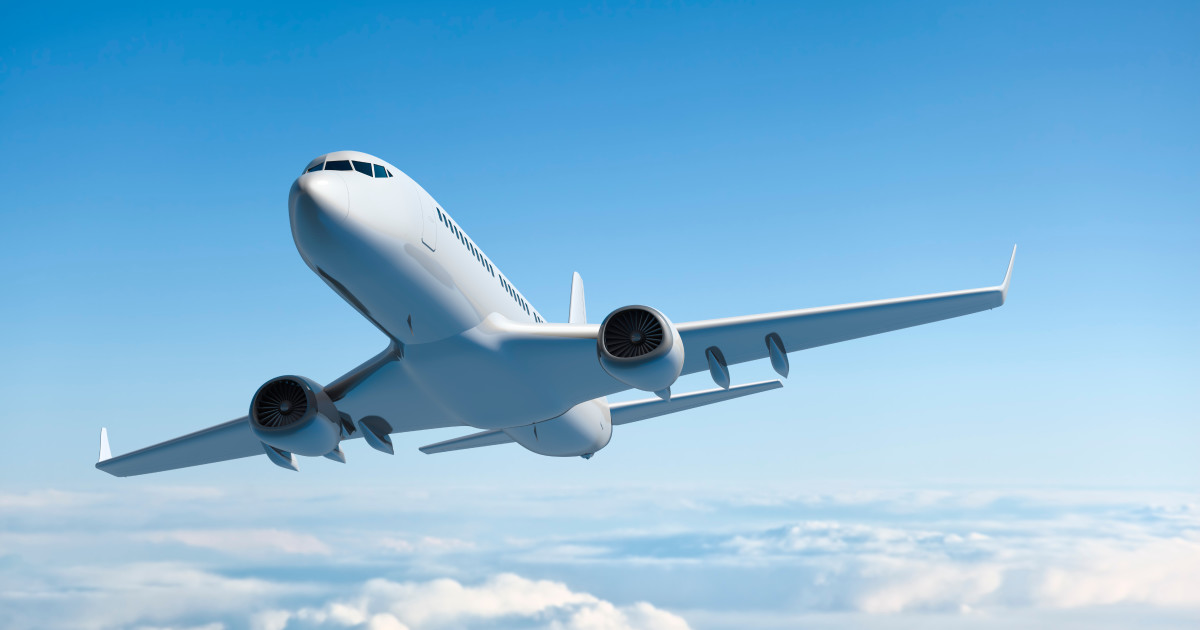Copyright Simple Flying

The Boeing 777-200ER has served as one of the most dependable and long-range widebody aircraft in commercial aviation. Since its introduction in the late 1990s, it has bridged the gap between the smaller 767 and the heavier 747, becoming the workhorse for major intercontinental routes. Airlines valued its balance of range, capacity, and operating efficiency, enabling nonstop links between continents with unprecedented reliability. Now, nearly three decades later, the industry is preparing to retire the type in favor of newer, more efficient successors. The question is which modern aircraft will inherit the 777-200ER’s global footprint. The shift to these newer aircraft reflects the broader evolution of long-haul air travel. Passenger expectations have grown alongside environmental standards, forcing airlines to adopt cleaner, quieter jets. The 777-200ER set a high benchmark for dependability, but modern aviation requires higher fuel efficiency and shorter maintenance cycles. New materials, lighter structures, and digital systems now define success in this category. The following sections outline how each successor meets the needs of today’s airlines while respecting the legacy of Boeing’s original widebody workhorse. A Legacy Of Long Range And Reliability When Boeing introduced the 777-200ER in the late 1990s, it marked a new era of twin-engine intercontinental flight. Airlines appreciated its ability to operate ultra-long routes without relying on four-engine designs. It became a favorite for transpacific and transatlantic operations, offering impressive reliability and fuel capacity. According to Airliners.net, aviation enthusiasts and pilots consistently praised its balanced performance and ease of handling on long-range missions. This reputation solidified its place as one of Boeing’s most successful widebodies. Over its service life, the 777-200ER was adopted by major carriers including British Airways, United, and Japan Airlines. The aircraft’s combination of high thrust and extended range allowed airlines to streamline operations and reduce fleet complexity. Passengers benefited from the cabin’s spacious layout and dependable schedules that defined early long-haul travel comfort. The aircraft’s twin-engine design became a proof point for ETOPS reliability across multiple oceanic corridors. Its commercial longevity shows how well Boeing balanced technology, performance, and passenger appeal. Even so, aviation has moved on to a new generation of aircraft that prioritize sustainability and digital optimization. Airlines now favor widebodies that use composite materials and produce lower carbon emissions. The 777-200ER’s retirement from major fleets has opened the door for the 787 Dreamliner, Airbus A350, and upcoming 777X to take its place. Each successor continues the legacy of dependable, efficient global connectivity in a more environmentally responsible way. These new aircraft represent evolution rather than replacement. How Airlines Are Reshaping Long-Haul Strategy Japan Airlines recently began retiring older widebody aircraft, signaling a shift in fleet renewal dynamics. According to AeroTime, the airline’s phase-out of the 777 family underscores a shift toward lighter, composite-based models. The decision reflects how carriers are prioritizing sustainability and lower fuel burn over capacity alone. With newer types like the A350-900 and 787-9 now in service, the transition to next-generation aircraft is well underway. This modernization aligns with broader aviation trends emphasizing emissions reduction and cost efficiency. Across major markets, airlines are blending aircraft types to match route performance more precisely. The A350 provides greater range and seating capacity, while the 787 Dreamliner excels on medium-density long-haul routes. This segmentation gives operators flexibility to adapt to changing passenger demand without overcommitting on size. It also helps reduce idle time by matching aircraft to specific missions rather than using one type for all. The strategy is part of a new era of data-driven fleet planning focused on operational optimization. At the same time, the Boeing 777X is preparing to join fleets later this decade as the direct spiritual successor to the Boeing 777-200ER. Its advanced GE9X engines, larger windows, and folding wingtips represent a blend of innovation and heritage. Airlines expect it to handle flagship routes with higher payloads and reduced per-seat operating costs. Boeing’s new design ensures familiarity for pilots transitioning from older 777 models while offering major performance gains. For carriers loyal to Boeing, the 777X provides continuity with modern advantages. Comparing The Successors To The Original Workhorse Each of the three major replacements offers distinct advantages. The Airbus A350 is a clean-sheet design built almost entirely from lightweight composites, providing an immediate efficiency boost. The Boeing 787 Dreamliner, while smaller, offers unmatched flexibility across medium- and long-haul networks. The Boeing 777X takes the traditional widebody concept and redefines it with state-of-the-art engine and wing technologies. According to Business Insider, both Airbus and Boeing are competing to dominate this evolving market segment. Fuel efficiency remains the key differentiator between these models and the 777-200ER. The A350-900 offers roughly a 25 percent reduction in fuel burn compared to older 777 variants, thanks to its aerodynamic shape and efficient Rolls-Royce Trent XWB engines. The 787-9 delivers similar savings through its GEnx powerplants and advanced composite fuselage. Both aircraft allow airlines to maintain long-range operations with significantly lower emissions. The upcoming 777-8 and 777-9 are expected to match or exceed these performance standards once deliveries begin. Key Successor Aircraft To The Boeing 777-200ER Passenger experience also plays a central role in determining which aircraft airlines choose. The A350’s cabin features higher humidity and lower cabin altitude, reducing fatigue on long journeys. The 787’s advanced lighting system and larger windows create a calmer environment, appealing to premium travelers. Boeing has integrated these lessons into the 777X, which will feature the largest windows ever installed on a commercial jet. Collectively, these innovations show how passenger comfort has become inseparable from efficiency in modern widebody design. Technological Progress Driving Efficiency Gains The Airbus A350 and Boeing 787 Dreamliner showcase the benefits of composite manufacturing. Their structures weigh significantly less than traditional aluminum airframes, allowing higher payload and longer range without added fuel use. This design evolution reflects how materials science has transformed aviation over the past two decades. According to Quora, experts estimate that composites contribute up to 20 percent of total fuel savings. This improvement sets the standard for new aircraft development across the industry. The 777X approaches efficiency differently by integrating proven materials with next-generation aerodynamics. Its folding wingtips extend the total wingspan to 235 feet while maintaining airport compatibility. This unique feature reduces drag and improves lift during cruise, resulting in direct fuel savings. The GE9X engine contributes another ten percent reduction in consumption compared to the previous GE90 series. The result is a widebody optimized for both range and performance without radical structural changes. Both Airbus and Boeing are also focusing on digital monitoring systems to enhance efficiency throughout an aircraft’s life cycle. Sensors embedded within the A350 and 787 constantly collect performance data for predictive maintenance and route optimization. Airlines can adjust flight profiles based on real-time analysis to maximize engine health and minimize wear. These digital innovations extend component longevity and reduce downtime, further cutting operating costs. The 777X will expand on this approach when it enters commercial service later in the decade. How Airlines Are Deploying The New Generation The Airbus A350 and Boeing 787 Dreamliner have already established themselves as core components of global long-haul networks. They enable airlines to operate thinner city pairs more profitably than ever before. United, Qatar Airways, and Singapore Airlines use them on routes that previously required larger 777s. This versatility has accelerated fleet transitions around the world. According to AeroTime, airlines are aligning their networks around these efficient widebodies to future-proof operations. The 777X, though delayed, is viewed as Boeing’s flagship response to the A350’s success. Its larger capacity positions it as a perfect fit for high-density intercontinental routes. Airlines such as Emirates and Qatar Airways have placed significant orders, demonstrating confidence in their potential. The aircraft is expected to debut on long-haul routes between global hubs like Dubai, London, and Los Angeles. Its entry will mark a new chapter in Boeing’s twin-engine dominance. Fleet strategies increasingly combine these aircraft types to cover every possible mission profile. Airlines use the 787 Dreamliner for medium-capacity services, the A350 for premium long-range markets, and the 777X for high-density flagship routes. This blended approach minimizes cost per seat while maximizing operational reach. Video analysis from YouTube highlights how carriers are matching aircraft types to passenger flows with greater precision. Together, they form a flexible and sustainable fleet ecosystem replacing the 777-200ER’s once-singular dominance. The Continuing Legacy Of Boeing’s Twinjet Pioneer The 777-200ER’s influence continues to shape how modern aircraft are built and marketed. Boeing’s experience designing the original 777 program laid the foundation for both the 787 Dreamliner and Boeing 777X families. Airbus likewise adopted similar principles in developing the A350, particularly around twin-engine range and cabin comfort. The aircraft that replaced the 777-200ER are therefore not competitors but successors in philosophy. From an environmental standpoint, the 777-200ER’s retirement marks progress toward cleaner skies. The latest generation of widebodies emits far less CO₂ per seat while offering a longer range. Airlines are now focused on integrating sustainable aviation fuel and digital flight management to enhance these gains. This transition represents both the end of an iconic chapter and the beginning of a greener era in aviation. The A350, 787, and 777X embody this change perfectly. The aviation landscape that once belonged to the 777-200ER is now shared by its advanced replacements. Each offers unique advantages tailored to specific airline strategies. Whether through the A350’s composite strength, the 787’s flexibility, or the 777X’s power, all three continue the mission. The 777 began connecting the world efficiently and reliably. The future of long-haul travel is therefore built upon its enduring legacy. Boeing’s iconic twinjet lives on through the aircraft designed to succeed it.



